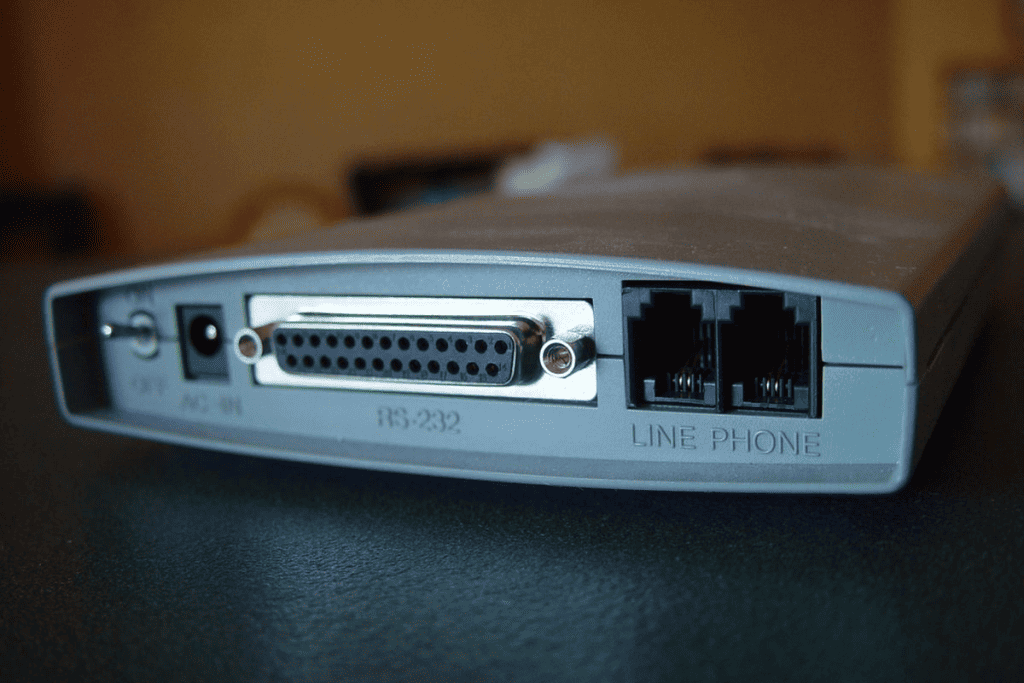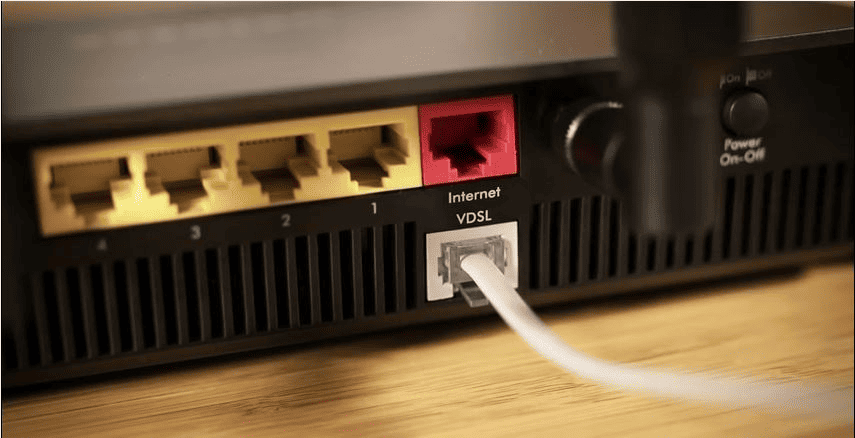Broadband and dial up refer to two distinct methods of connection offered by Internet service providers. Apart from the difference in the data rate or throughput between the two, a broadband service is expected to be always on, whereas dial up is initiated when and as access to the Internet is required.
Dial up
Dial up connections require a plain old analog modem at both ends of the connection, that work over the Public Switched Telephone Network (PSTN).
From the subscriber side, dial up modems have one role, which is to call in to the Internet service provider’s data center over a conventional telephone line, establish the connection, and convert sent data into an audio signal and back to data on receipt.
One of the many drawbacks of dial up, is that when a connection is established, it takes over the telephone line, and so the line cannot be used by the subscriber for regular telephone calls for the duration of the Internet session.
This is a problem in households (or even businesses) where there is only a single telephone line. Also, depending on the telephone service provider, since the Internet connection is no different to a regular telephone call, the duration of the Internet session may incur telephone subscriber charges.

Dial up modems are usually directly connected to the user’s computer, as an on-board component on the motherboard, as an internal add-on card, or as an external modem connected to the RS232 serial port via a serial cable.
The computer is then responsible for controlling when the connection is initiated, maintaining the network routing tables, and monitoring the flow of data back and forth with the data center.
Since the modem connection itself, does not directly provide for the transmission of IP packets required for Internet access, Point to Point Protocol (PPP) is the most common protocol used, once the dial up connection has been established.
PPP provides any required user connection authentication, as well as performing transmission encryption and data compression. Depending on the operating system of the subscriber’s computer system, PPP and other Dial-up Networking utilities may need to be installed as add-on software.
Due to the fact that the guaranteed bandwidth offered by the PSTN is 4 kHz, the maximum downstream speed offered by dial up is 56 kilobits per second (kbps) and 33.6 kbps upstream, using the International Telecommunication Union’s (ITU) V90 standard.
In truth, the maximum data rate is usually less than these, dependent on the condition and quality of the line, and the distance between the subscriber and the telephone company central office (CO).
While today the CO and data center are usually one and the same entity, in the past, they were separate providers. In those cases, the data center and CO were usually connected together through a digital connection.
Broadband
Broadband Internet connections also use a modem, but there is no dial up procedure. Instead, the subscriber’s modem synchronizes with the CO Digital-Subscriber-Line-Access-Multiplexer (DSLAM) and is given immediate connection.
The connection remains always on, and unlike a dial up connection, does not interfere with the regular phone line access. Internet access and phone calls can co-exist at the same time over the same line.
Broadband connections are also characterized as high speed, high throughput connections. The FCC gives the following definition:
Broadband or high-speed Internet access allows users to access the Internet and Internet-related services at significantly higher speeds than those available through "dial-up" services. Broadband speeds vary significantly depending on the technology and level of service ordered. Broadband services for residential consumers typically provide faster downstream speeds (from the Internet to your computer) than upstream speeds (from your computer to the Internet).
FCC.gov - Last updated Feb. 5, 2020
The first broadband connections offered a speed of 256 kbps, while today’s Internet subscribers can enjoy speeds upwards of 100 Mbps, allowing for such things as streaming of high quality audio and media, playing online games, and performing backups to the cloud.
What’s more, the service still uses the same old copper wires available from the PSTN.
This is achieved by utilizing a much wider bandwidth (30MHz in fact) than the standard 4 kHz, for which the cabling was originally designed to handle. The extra bandwidth comes at a cost though. The subscriber’s modem cannot be more than 1000 ft from the Internet providers equipment.
Internet providers have installed on-street cabinets, close to subscriber premises, which multiplex copper wire connections from multiple subscribers, then passing the feed on to the data center over a fiber optic cable.
Also, and unlike dial up, broadband connections are not restricted to just using the PSTN. Broadband is similarly available over cable (this is coaxial cable and is what is used to provide cable TV in the U.S.), optic fiber (more commonly available to and used by businesses than households), wireless, and satellite.
While it is possible to find broadband modems as modem only devices, they are more commonly bundled as part of a router device, also referred to as a modem/router, encompassing several functions.
As a modem, just like a dial up modem, it needs to convert the data stream into frequency signals that can be transmitted over whatever medium the connection is using between the subscriber and the Internet service provider.

On the subscriber’s internal private network, the device offers Local Area Network (LAN) connection via RJ-45 ports (Ethernet cable connection), taking on the role of a network switch. It also provides wi-fi access, and internally keeps track of what devices are connected.
This means that a connecting computer does not need to install any additional networking utilities. Almost all modern operating systems come packaged with all required network protocols. Anything extra is taken care of by the modem/router.
Unlike dial-up modems, which only allowed one user to be connected at a time, broadband modems have no such limitations. A broadband connection can be used to provide access to any number of devices connected on a network (including wireless connections).
The only limitation is that all connected devices would be sharing the same Internet connection’s bandwidth.
Conclusion
For most users, broadband Internet access today offers speeds of from 50 Mbps to 300 Mbps over copper wire connections, which is more than adequate to hold video conferencing sessions, play streaming media content, and download the largest of files.
In contrast, the maximum 56 kbps of dial up would not even be able to handle most users email, especially where attachments are included. Compare the 2 minutes it takes to download a 700 MB file over a 50 Mbps broadband connection, with the 30 hours over a dial up 56 kbps connection.
While the main differences between a dial up and broadband connection are the high speed and always on capability of the latter, there are other differences as well between the two, which are just as great, yet perhaps not so obvious.
The modems used in broadband connections, almost always come equipped with wi-fi and LAN connections, providing Internet access for more than just one device, usually an entire network of devices, unlike a dial up modem which can only service the device to which it is connected.
Broadband connections can also be achieved over several media types, such as cable and satellite, while dial up is available only over the PSTN.
Dial up modems also take over the telephone line, which cannot be used for incoming or outgoing telephone calls for the duration of the Internet session. A broadband connection on the other hand, operates independently of and without interruption to the telephone service.

